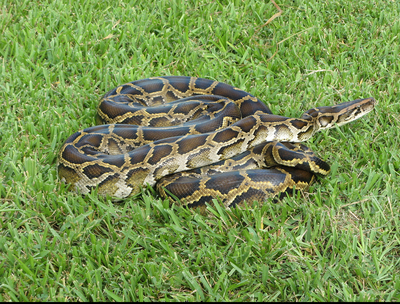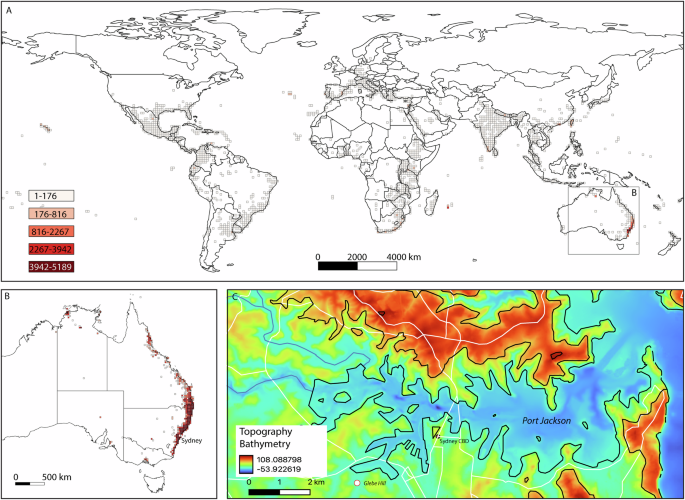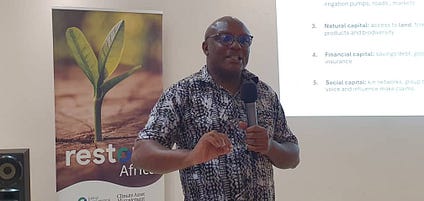Report on Invasive Species Management in Florida and Alignment with Sustainable Development Goals
Introduction: Addressing Threats to Biodiversity
The state of Florida is confronting a significant environmental challenge with the presence of over 500 non-native species, a situation that directly impacts the achievement of several Sustainable Development Goals (SDGs). The proliferation of invasive species, defined as non-native organisms causing environmental harm, poses a direct threat to SDG 15 (Life on Land) and SDG 14 (Life Below Water) by degrading natural habitats, disrupting ecosystems, and accelerating biodiversity loss. This report outlines the strategic response by the Florida Fish and Wildlife Conservation Commission (FWC), its financial implications, and its alignment with global sustainability targets.
Financial Commitment to SDG 15.8
In alignment with SDG Target 15.8, which calls for measures to prevent the introduction and reduce the impact of invasive alien species, the FWC has significantly increased its financial commitment. The commission has requested a budget of nearly $6.3 million for the 2025-26 fiscal year for non-native species control. This represents a substantial increase from the $3.4 million allocated in 2021-22, underscoring the escalating cost and urgency of managing established invasive populations to protect terrestrial and aquatic ecosystems.
Ecological Impact and Challenges
The ecological integrity of critical habitats like the Everglades is under severe threat, directly challenging the objectives of SDG 15. The Burmese python serves as a prime example of this threat.
- Apex Predator Disruption: FWC Chief Conservation Officer George Warthen confirmed that adult pythons function as apex predators with no natural enemies, leading to a severe decline in native mammal populations and disrupting the natural food web.
- Difficulty of Eradication: Officials acknowledge that complete eradication of entrenched species like the Burmese python and wild hog is likely unfeasible, shifting the focus from eradication to long-term, costly management.
- Prevention vs. Management: The FWC emphasizes that prevention is far more cost-effective than management. Once a species becomes established, control measures become exponentially more expensive, diverting resources that could be used for proactive conservation efforts.
Strategic Interventions and Multi-Stakeholder Partnerships (SDG 17)
Florida’s strategy incorporates a multi-faceted approach that reflects SDG 17 (Partnerships for the Goals) by engaging government, academia, and the public to achieve its conservation objectives.
- Public Engagement and Citizen Science: Initiatives such as the Florida Python Challenge, which resulted in the removal of nearly 300 pythons, and a dedicated app for reporting invasive species, mobilize the public to participate in conservation efforts.
- Academic Collaboration: The FWC has established partnerships with the University of Florida and the University of Central Florida to enhance python tracking and research, leveraging scientific expertise to inform management strategies.
- Technological Innovation (SDG 9): In pursuit of SDG 9 (Industry, Innovation, and Infrastructure), the FWC is exploring advanced technological solutions. Officer Warthen highlighted the potential of non-human interventions, such as AI-powered traps, as critical future tools for effective and scalable detection and control of invasive species.
Analysis of Sustainable Development Goals in the Article
-
Which SDGs are addressed or connected to the issues highlighted in the article?
The article primarily addresses issues related to the following Sustainable Development Goals (SDGs):
- SDG 15: Life on Land: This is the most prominent SDG, as the article focuses on the threat that invasive species like Burmese pythons, wild hogs, and chameleons pose to Florida’s terrestrial ecosystems, particularly the Everglades. The discussion revolves around protecting native wildlife and halting biodiversity loss caused by these non-native animals.
- SDG 14: Life Below Water: Although mentioned briefly, the inclusion of lionfish as an invasive species connects the article to this goal. Lionfish are a significant threat to marine ecosystems, and efforts to control them contribute to the protection of life below water.
- SDG 17: Partnerships for the Goals: The article mentions the Florida Fish and Wildlife Conservation Commission’s (FWC) collaboration with academic institutions. This highlights the importance of partnerships in addressing complex environmental challenges.
-
What specific targets under those SDGs can be identified based on the article’s content?
Based on the article’s content, the following specific SDG targets can be identified:
- Target 15.8: “By 2020, introduce measures to prevent the introduction and significantly reduce the impact of invasive alien species on land and water ecosystems and control or eradicate the priority species.” The entire article is a case study of this target in action. The FWC’s budget, python removal challenges, reporting apps, and control measures are all actions aimed at reducing the impact of invasive species like Burmese pythons.
- Target 15.5: “Take urgent and significant action to reduce the degradation of natural habitats, halt the loss of biodiversity and, by 2020, protect and prevent the extinction of threatened species.” The article implies this target by describing adult Burmese pythons as “apex predators” that are “killing everything” in the Everglades, which directly leads to biodiversity loss and the degradation of that natural habitat.
- Target 15.a: “Mobilize and significantly increase financial resources from all sources to conserve and sustainably use biodiversity and ecosystems.” The article explicitly details the mobilization of financial resources, noting that the FWC’s non-native species control budget “has almost doubled since 2022,” with a planned “$6.3 million… for the 2025-26 year,” a sharp increase from “$3.4 million in 2021-22.”
- Target 17.17: “Encourage and promote effective public, public-private and civil society partnerships…” The article provides a clear example of this by mentioning the FWC’s “partnerships with the University of Florida and University of Central Florida to track pythons,” demonstrating a public-public partnership to achieve a common environmental goal.
-
Are there any indicators mentioned or implied in the article that can be used to measure progress towards the identified targets?
Yes, the article mentions or implies several indicators that can be used to measure progress:
- Indicator for Target 15.8: The number of invasive species being managed. The article provides a baseline by stating, “More than 500 non-native species have been reported in Florida.” Progress could be measured by tracking the management status of these species.
- Indicator for Target 15.8: The number of invasive animals removed. The article gives a specific metric: “participants in Florida Python Challenge removed almost 300 pythons.” This is a direct quantitative indicator of control efforts.
- Indicator for Target 15.a: The amount of financial resources allocated to biodiversity conservation. The article provides precise figures that serve as an indicator of financial commitment: the budget increase from “$3.4 million in 2021-22” to a planned “$6.3 million” for 2025-26.
- Indicator for Target 17.17: The existence and number of multi-stakeholder partnerships. The article points to this by citing the “partnerships with the University of Florida and University of Central Florida,” which can be counted as an indicator of collaborative action.
-
Create a table with three columns titled ‘SDGs, Targets and Indicators” to present the findings from analyzing the article.
SDGs Targets Indicators SDG 15: Life on Land Target 15.8: Introduce measures to prevent the introduction and significantly reduce the impact of invasive alien species on land and water ecosystems and control or eradicate the priority species. - Number of non-native species reported (500+ in Florida).
- Number of invasive pythons removed during a specific event (almost 300).
SDG 15: Life on Land Target 15.a: Mobilize and significantly increase financial resources from all sources to conserve and sustainably use biodiversity and ecosystems. - Annual budget allocated for non-native species control ($3.4 million in 2021-22, planned $6.3 million for 2025-26).
SDG 17: Partnerships for the Goals Target 17.17: Encourage and promote effective public, public-private and civil society partnerships. - Number of institutional partnerships for species control (e.g., FWC partnerships with the University of Florida and University of Central Florida).
Source: wmnf.org






